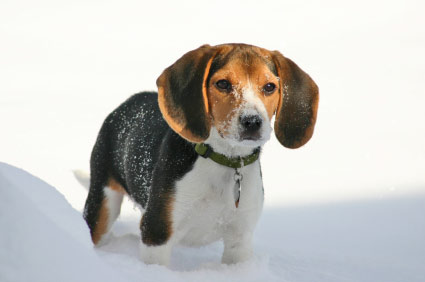Cold Weather Tips
Cold Weather Tips
Is your pet biting at his tail or paws? Are his feet, ears, or tail unusually cold? Is he shivering or does he seem lethargic?
When dogs and cats lived in the wild, cold weather was rarely a problem because they evolved to suit the climates in which they found themselves. But people changed nature’s plan by bringing thin-coated dogs to New England and desert-dwelling cats to Minnesota. Brr!
With the exception of huskies, bred to withstand cold climates, dogs and cats aren’t made for frigid conditions. They get just as cold in icy weather as people do. And because they go barefoot all the time, their paws are vulnerable to ice, packed snow and road salt. In extreme conditions, they can get frostbite, says John F. Sangiorgio, D.V.M., a holistic veterinarian in private practice in Staten Island, New York.
When the thermometer dips below freezing, it is important to protect dogs and cats from the elements, even when they are only spending a short time outside. Here is what some veterinarians advise.
Nourish the skin. Cold air is extremely drying, and pets that have spent too much time in the elements will quickly get sore ears and paws. To moisturize and nourish the skin, apply the gel from a vitamin E capsule. The juice from an aloe vera plant will also provide quick relief.
Vitamins can protect your pet from the inside out. Vitamin E and B-complex vitamins will strengthen the tissues and make dogs and cats more resistant to cold. Give cats and dogs under 15 pounds 100 international units (IU) of vitamin E a day, and half a capsule or tablet of B-complex 50 vitamins. Pets 15 to 50 pounds can have between 200 and 300 IU of vitamin E, along with a B-complex 50 vitamin. Dogs over 50 pounds can take 300 to 400 IU of vitamin E and a B-complex 100 vitamin.
Fortify the coat. In order to maintain a thick, protective coat, dogs and cats need to get fatty acids in their diets. Dr. Sangiorgio recommends giving fatty-acid supplements, available in pet supply stores, toward the end of summer, which will cause the coat to grow in a bit thicker for the cold months. Follow the instructions on the label.
Other tips:
[list style=”check “]
- Give him extra calories
- Prepare him slowly
- Bundle him up
- Give him shelter
- Keep him dry
[/list]

